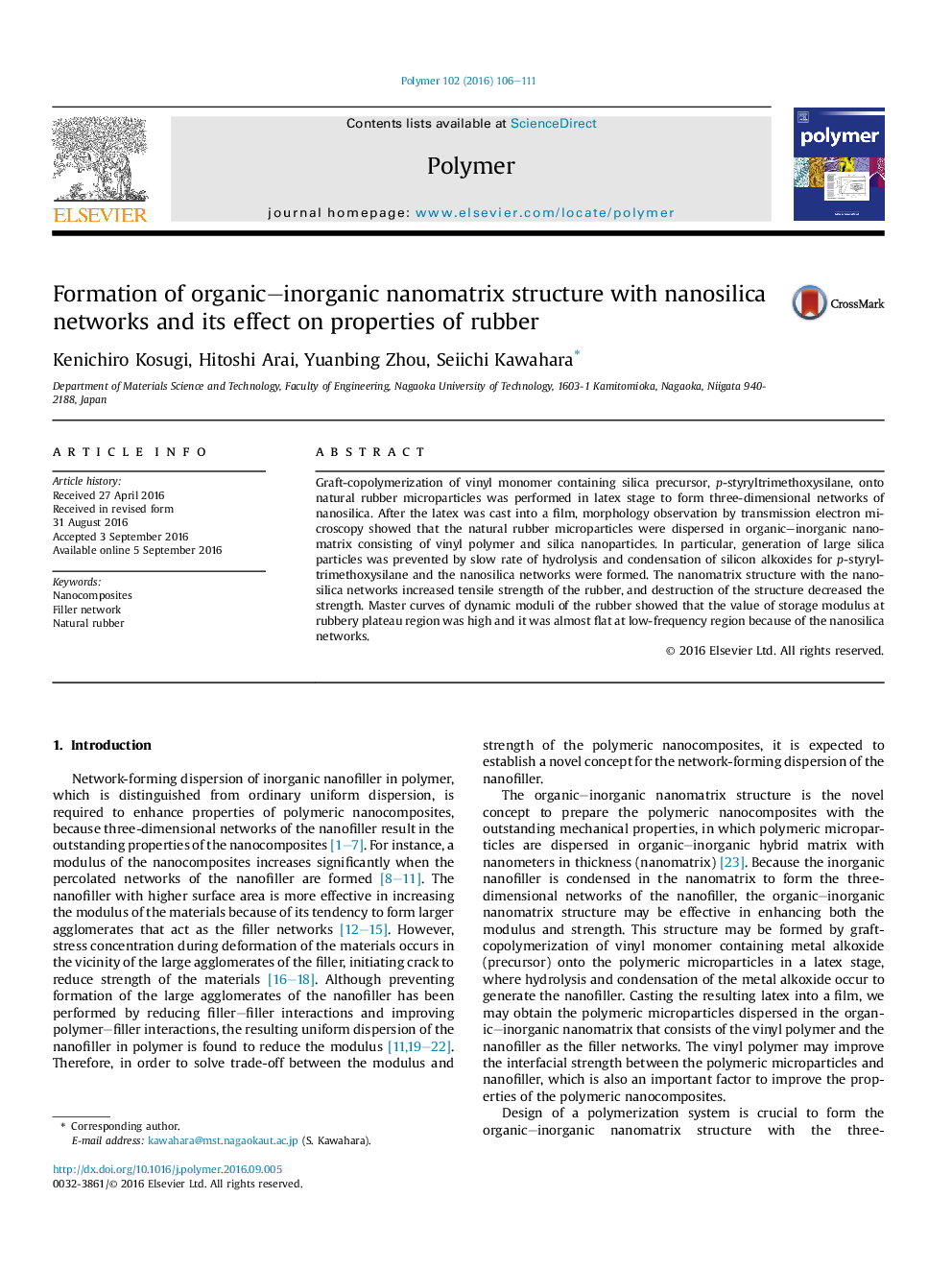| Article ID | Journal | Published Year | Pages | File Type |
|---|---|---|---|---|
| 5178597 | Polymer | 2016 | 6 Pages |
â¢Formation of nanosilica networks was intended rather than uniform dispersion.â¢Grafting of p-styryltrimethoxysilane onto rubber particles was performed in latex.â¢Generation of large silica particles was suppressed to form nanosilica networks.â¢Both tensile strength and modulus of the rubber increased by nanosilica networks.â¢High value of plateau modulus and wide plateau region were attained.
Graft-copolymerization of vinyl monomer containing silica precursor, p-styryltrimethoxysilane, onto natural rubber microparticles was performed in latex stage to form three-dimensional networks of nanosilica. After the latex was cast into a film, morphology observation by transmission electron microscopy showed that the natural rubber microparticles were dispersed in organic-inorganic nanomatrix consisting of vinyl polymer and silica nanoparticles. In particular, generation of large silica particles was prevented by slow rate of hydrolysis and condensation of silicon alkoxides for p-styryltrimethoxysilane and the nanosilica networks were formed. The nanomatrix structure with the nanosilica networks increased tensile strength of the rubber, and destruction of the structure decreased the strength. Master curves of dynamic moduli of the rubber showed that the value of storage modulus at rubbery plateau region was high and it was almost flat at low-frequency region because of the nanosilica networks.
Graphical abstractDownload high-res image (269KB)Download full-size image
